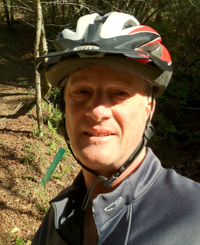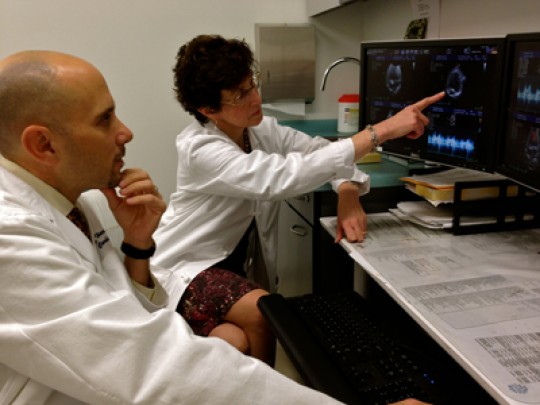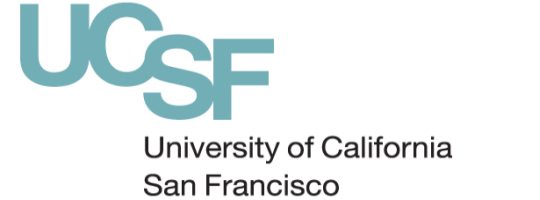Future Looks Bright for Congenital Heart Disease Patients
Future Looks Bright for Congenital Heart Disease Patients
Open Heart Surgery Saves Mill Valley Man on Valentine’s Day
…
…
Peter Barnett may be the most physically active man in Mill Valley, California. He stays busy by climbing the hills of his neighborhood on a mountain bike.
“I love where I live and it certainly makes it easy for me to stay active,” said the 53-year-old real estate financial consultant. “I’m half an hour from the beach. I can ride the bike outside the house and be on the hills within minutes.”
Barnett also skis, surfs, jogs and hikes. He has even trekked the Himalaya Range, the world’s highest mountain system located in South Asia, climbing as high as 19,000 feet on several occasions.
His athletic endeavors are somewhat surprising considering this Valentine’s Day is the 15thanniversary of his life-saving open heart surgery at UCSF for a condition that he thought had been fixed when he was an infant.
On Valentine’s Day 1997, Barnett had open heart surgery at UCSF to replace his pulmonary valve. Doctors also implanted a defibrillator, a device that delivers electric energy to jolt a heart back to normal sinus rhythm when it goes into life-threatening cardiac arrhythmia or ventricular fibrillation.

Peter Barnett
Barnett is among the growing ranks of people born with congenital heart disease, who are surviving, thanks to life-saving pediatric cardiology programs such as the one at UCSF.
“Many of these survivors like Mr. Barnett live extraordinary lives,” said Elyse Foster, MD, director of the UCSF Adult Echocardiography Laboratory and Adult Congenital Heart Disease Service. “However, they almost always have ongoing cardiac issues that need to be monitored and treated throughout their lives.”
“I was lucky to find Dr. Foster,” Barnett said. “What brought me and a lot of other people in my condition to her was that nobody followed us basically for 30, 40 years and we started to have difficulties.”
These adults are best served in integrative multidisciplinary care programs such as the one offered at UCSF’s Adult Congenital Heart Disease Service. Its team members have expertise in cardiac imaging, treatment of abnormal heart rhythms, high risk obstetrics as well as interventional cardiologists and specially trained cardiac surgeons.
“Very few places in the world can match UCSF’s wealth and breadth of research in cardiovascular development, which is available to inform clinical treatment and clinical diagnosis,” said Ian Harris, MD, a UCSF cardiologist specializing in adult congenital cardiology, the management of heart disease in pregnancy, and genetic cardiovascular diseases. “I think it creates an academic environment that positions us in a unique way. We have four of the top developmental cardiologists in the world at UCSF and one of the top medical geneticists.”
Defying the Odds of Congenital Heart Disease
Barnett was born with tetralogy of Fallot, a rare and complex congenital heart defect which occurs in about five of every 10,000 babies born in the United States.
“I was born with four irregularities with my heart,” Barnett said. “One was a hole between the lower chambers, basically a malformed valve and pulmonary vein, that had to be repaired, and a deformity between the chambers.”
Tetralogy of Fallot falls into a category of cyanotic heart lesions, also called “blue baby syndrome” because it causes the skin to turn bluish in color as a result of deoxygenated blood in the baby’s system. Congenital heart defects are the most common birth defects in the United States, affecting more than 25,000 babies per year, according to the March of Dimes.
 UCSF specialists Ian Harris, MD, left, and Elyse Foster, MD, consult on a case at the UCSF Cardiovascular Care & Prevention Center at Mission Bay.
UCSF specialists Ian Harris, MD, left, and Elyse Foster, MD, consult on a case at the UCSF Cardiovascular Care & Prevention Center at Mission Bay.
Before major advancements in cardiac surgery and intervention, approximately 70 percent of babies with this heart condition died before they turned 10. Operations became possible in the late 1950s, right around the time Barnett was born.
“When I was young, I was told that without the surgery, I wouldn’t live out of my teens,” Barnett said. “So I’ve sort of lived under borrowed time.”
Operations to treat congenital heart disease accelerated through the 1960s and 1970s. At first cardiologists could fix only simple forms of congenital heart disease. Then, in the late ‘70s and into the ‘80s, surgical innovations caught up, allowing children with the most complex forms to survive.
Barnett came to UCSF after almost dying 15 years ago.
“I was seen by doctors until I left the house and then every five years or so by a regular cardiologist,” he said. “And when I was 37, I went into ventricular tachycardia, or cardiac arrest, and the doctors at the local hospital in my hometown didn’t know what to do with me. They shocked me out of an almost fatal rhythm.”
UCSF cardiologists emphasize the need for congenital heart disease patients to receive specialized care throughout their lives to minimize the risk of complications.
“Patients fall through the cracks for two reasons: a lot of adult-trained physicians view this as kind of an esoteric curiosity and don’t really delve into it or feel that any specialized care is needed,” Harris said. “And a patient will have an operation and will have the impression that he or she has been cured and that there’s nothing else to be done. Too often we see some long-term complications with procedures that occur without the patient knowing it until a problem develops. While not every patient can exercise to the same level as Mr. Barnett, we try to help each patient reach his or her full potential by intervening before permanent cardiac disability occurs.”
Barnett is among the growing ranks of people with his condition who are defying the odds.
”With increased survival of babies born with congenital heart disease, the number of adults in the United States exceeds the number of children with congenital heart disease,” Foster said.
Barnett, who once was told he wouldn’t live to see his 20th birthday, just turned 53. He’s married with two children: a boy and a girl. And many more peaks and ski runs and waves to conquer.
“Life is a gift and due to some very specially trained people and people who take what they do seriously, I’m still here and still doing what I like to do,” Barnett said. “I’ve learned to live in the present, enjoy what I have, and enjoy what’s around me. I hope for the best and make the future the best I can for me and my family.”
By Leland Kim
Senior Public Information Representative
University of California, San Francisco (UCSF)
###
> About University of California, San Francisco (UCSF).
The University of California, San Francisco (UCSF) is a leading university dedicated to promoting health worldwide through advanced biomedical research, graduate-level education in the life sciences and health professions, and excellence in patient care. It is the only UC campus in the 10-campus system dedicated exclusively to the health sciences.
More about University of California, San Francisco (UCSF).
More about University of California, San Francisco (UCSF). Information.
###
* The above story is adapted from materials provided by University of California, San Francisco (UCSF)
________________________________________________________________




















